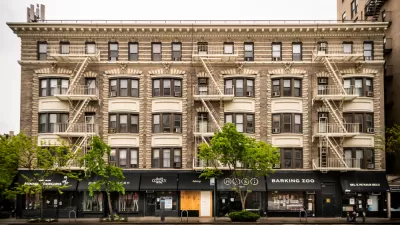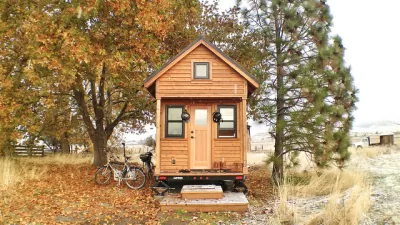The city is experiencing significant growth and development, but it has a complicated history of booms and lags and its civic future is uncertain.

Mitchell Schwarzer takes a closer look at the development history of Oakland, California, through its various booms—starting in the 1920s, then in the 1960s and 2010s, and now reflected in the current construction flurry in downtown Oakland.
While he welcomes the density and vibrancy that will come with the many new residential, hotel, and office buildings, Schwarzer argues that important aspects of the city, as well as its vulnerable residents, are being ignored by civic leaders. "Expanded rail and bus networks, education systems, parks, and civic buildings — active ingredients in earlier times of city-making — are largely absent. The myriad interrelated functions that maintain a public city are being neglected."
Schwarzer grapples with this conflict between Oakland’s new outlook, after periods of neglect when other cities like San Francisco and Berkeley reoriented themselves and flourished, and the rapidly growing problems with homelessness, poverty, and an extreme lack of affordable housing.
These new pricey rentals and condos, to a certain degree, make older housing more available, as they have in the past, he notes. "But it is increasingly common to hear longtime residents voice nostalgia for the days when Oakland was bypassed by global capital flows, when downtown was a dead zone in the dark hours, and cranes were seen only at the Port — when the all-too-gritty reality of the Town kept investors away."
Schwarzer concludes by saying that a plan for affordable housing and a commitment to public investment must be top priorities. He also urges residents who want to live in a modern-day city like Oakland to wake up to the realities:
Most folks oppose suburban sprawl into wild lands and farms. Most enjoy vital urban centers, and understand the need for affordable housing. Most celebrate class and ethnic diversity. Yet the NIMBY attitude spawned in the era of overreaching public projects remains powerful. It is simply not possible to have it both ways, attaining cosmopolitan complexity while enjoying what amounts to a suburban-style life.
The San Francisco Bay Area has experienced astounding economic growth, says Schwarzer, and he wants cities like Oakland to affirm the public city—one that is dense, equitable, and focused on the needs of all residents—rather than supporting privatization and economic and social exclusion.
FULL STORY: Privatizing the Public City

Maui's Vacation Rental Debate Turns Ugly
Verbal attacks, misinformation campaigns and fistfights plague a high-stakes debate to convert thousands of vacation rentals into long-term housing.

Planetizen Federal Action Tracker
A weekly monitor of how Trump’s orders and actions are impacting planners and planning in America.

In Urban Planning, AI Prompting Could be the New Design Thinking
Creativity has long been key to great urban design. What if we see AI as our new creative partner?

King County Supportive Housing Program Offers Hope for Unhoused Residents
The county is taking a ‘Housing First’ approach that prioritizes getting people into housing, then offering wraparound supportive services.

Researchers Use AI to Get Clearer Picture of US Housing
Analysts are using artificial intelligence to supercharge their research by allowing them to comb through data faster. Though these AI tools can be error prone, they save time and housing researchers are optimistic about the future.

Making Shared Micromobility More Inclusive
Cities and shared mobility system operators can do more to include people with disabilities in planning and operations, per a new report.
Urban Design for Planners 1: Software Tools
This six-course series explores essential urban design concepts using open source software and equips planners with the tools they need to participate fully in the urban design process.
Planning for Universal Design
Learn the tools for implementing Universal Design in planning regulations.
planning NEXT
Appalachian Highlands Housing Partners
Mpact (founded as Rail~Volution)
City of Camden Redevelopment Agency
City of Astoria
City of Portland
City of Laramie





























